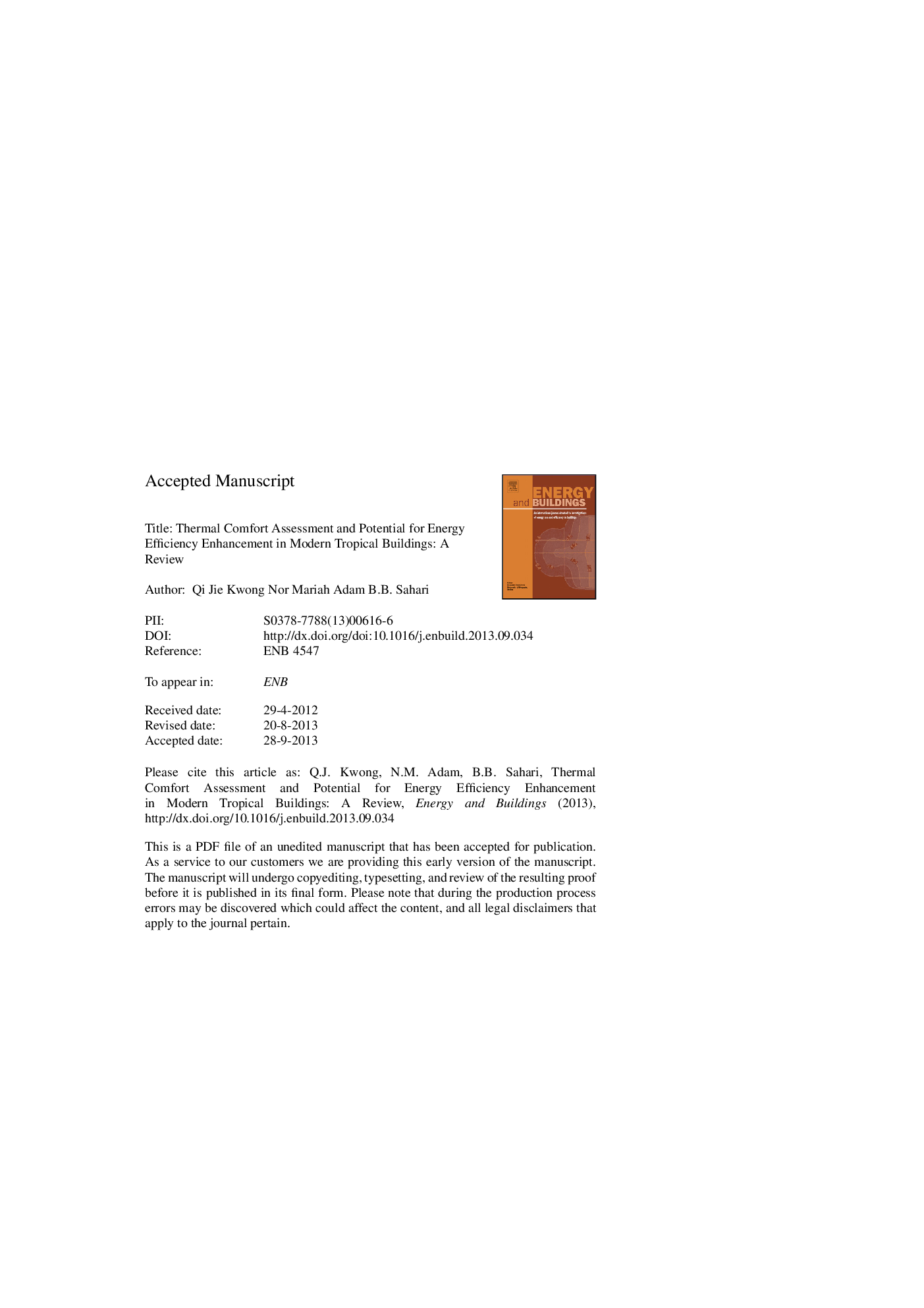| Article ID | Journal | Published Year | Pages | File Type |
|---|---|---|---|---|
| 10286064 | Energy and Buildings | 2014 | 68 Pages |
Abstract
The rapid growth in population and economy activities in the tropical countries has led to an increase in energy consumption which hastens the depletion of available energy resources. The building sector is one of the major end users of energy. On the other hand, the air conditioning system is viewed as an important tool to sustain and improve thermal comfort of occupants, but this system is often the biggest energy consumer in buildings. This has raised concerns on efficient use of the air conditioning system for reduction in energy cost. In order to identify the thermal comfort perception of occupants as well as energy conservation potentials in tropical buildings, various thermal comfort assessments were conducted which included field surveys and chamber studies. This paper provides a comprehensive review of the energy efficiency improvement potentials in air-conditioned tropical buildings by considering thermal comfort of occupants. Some of the studies conducted in the institutes of learning, offices and residential were reviewed and focus was placed on the thermal comfort studies that emphasis on balance between energy efficiency and thermal comfort. It was estimated that a reduction of 2150 GWh of energy demand annually in Malaysia can be achieved if the thermostat set-point is set higher by 2 °C, together with a reduction of 3 Ã 109 lbs (1.36 Ã 109 kg) of greenhouse gases. Besides, the use of computational simulation tools for prediction of thermal comfort and adaptive behaviour of people in the tropics towards their immediate thermal environment are also highlighted.
Keywords
Related Topics
Physical Sciences and Engineering
Energy
Renewable Energy, Sustainability and the Environment
Authors
Qi Jie Kwong, Nor Mariah Adam, B.B. Sahari,
